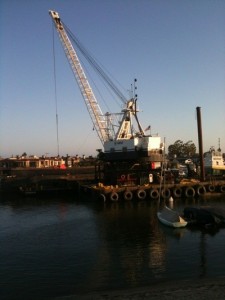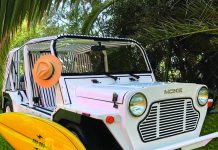Ahoy!
The National Marine Manufacturers Association has released its annual Recreational Boating Statistical Abstract, which is the maritime industry’s most comprehensive compilation of statistics and research. The report is positive, showing an improving recreational boating industry, with recreational boaters predominantly owners of small boats used by the average family.
Good news is that retail sales for recreational boats, accessories and marine services increased 6 percent, to $32.3 billion, new power and sailboat retail sales increased 0.8 percent, to 214,405, and boating participation increased 10 percent, to 83 million people. Participation is up through the years for 68 to 72 million pre-recession to 83 million post-recession, if one can say we are out of the recession.
“Pent-up demand for boats following years of diminished willingness to spend by consumers, improved credit availability for buyers and boating businesses, positive shifts in consumer confidence and an overall interest in the benefits of the boating lifestyle are steering the industry toward recovery,” notes Thom Dammrich, the NMMA president. “Americans’ passion for enjoying the boating lifestyle is taking precedence as they put aside concerns about the economy in favor of creating lifelong memories with loved ones.”
Sales may have increased to $32 billion, but nationwide data shows that boating has an estimated annual economic impact of $72 billion to the economy from direct and indirect sources. This spending is mainly from those boaters who have an annual household income of less than $100,000, which is about 83 percent of all boat owners in the nation (2011 data). Did you know that 95 percent of the 12.4 million registered boats in the nation are of less than 26 feet? So get rid of the mental image that boating is only for the rich and famous. However, the megayacht industry has slowed down, but it does provide a lot of maritime jobs and a huge boost to the local economy where the boat is docked.
I will have more as I digest the volumes of information from the latest report.

Tip of the week is a dredging update for Newport Harbor’s lower bay from Chris Miller, the city’s Harbor Resources Manager.
The larger dredge, “Palomar,” is working by the eastern tip of Lido Isle and will be rounding the island on the side of Via Lido Soud to the Balboa Peninsula. This dredged material will be taken to the Port of Long Beach for disposal.
The dredging in front of the Balboa Bay Club should be wrapping up by the dredge “180” and then the operations will move between Harbor Island and Collins Island. This dredging project will continue towards Balboa Island Bridge along North Bay Front to the Balboa Yacht Basin.
Keep in mind that three scows are being used at the two different dredge locations, so slow down and proceed with extreme caution. Also, the tugboat and scow have the right-of-way while the barge is being pushed through the harbor or towed at sea.
What is a scow? Scow is from the Dutch word schouwe which is a flat bottom, square ended open barge that is used to transport material whether goods, grain, coal, dredged material, etc. Now you know.
But I digress, as Miller is asking for all the operators of boats in the “D” mooring field, between Bayside Drive and Balboa Island, to move your vessels. The Harbor Department can help assign a temporary mooring at a different location at no charge for the few weeks of dredging activity.
The Port of Long Beach’s deadline of June 30 is approaching fast, so the dredging crews will be working day and night to dispose of any contaminated material. The tugs’ skippers are watching the tides to know when it is safe to transit the harbor with a loaded scow bound for Long Beach. Inbound is not as dependent upon the tides as the scows float high in the water when empty.
Miller recommends that you move you boat where dredging is occurring even at marinas and behind private homes. There is always the chance of a dredging mishap and material might end up on your boat. This bottom material can stai, especially canvass, and it can be difficult to wash off after drying rock hard.
Lastly, the anchorage has been closed in the large turning basis and a temporarily anchorage has been established at the western end of Lido Isle by the Lido Isle Bridge. You can read the updates and view the PDF dredging map online at newportbeachca.gov/lowerbaydredging. Boaters can contact Miller at CMiller@newportbeachca.gov and provide your email address for him to put you on the list for email updates.
And don’t forget: Tune in to the No. 1 boating radio talk show in the nation, Capt. Mike Whitehead’s Boathouse Radio Show, broadcasting coast-to-coast on the CRN Digital Talk Radio syndicated network every Saturday at noon, Pacific Time and replayed on Sunday at 10 am Pacific. Join Chandler Bell and me as we talk about “all things boating.” You can find the station listings, cable TV channels, live streaming on the Internet, and now available are apps to listen to the show for your iPhone, Blackberry, iTouch, Android, Palm, and Windows Mobile at www.BoathouseTV.com or www.BoathouseRadio.com.
Until next week, Safe Voyages!




